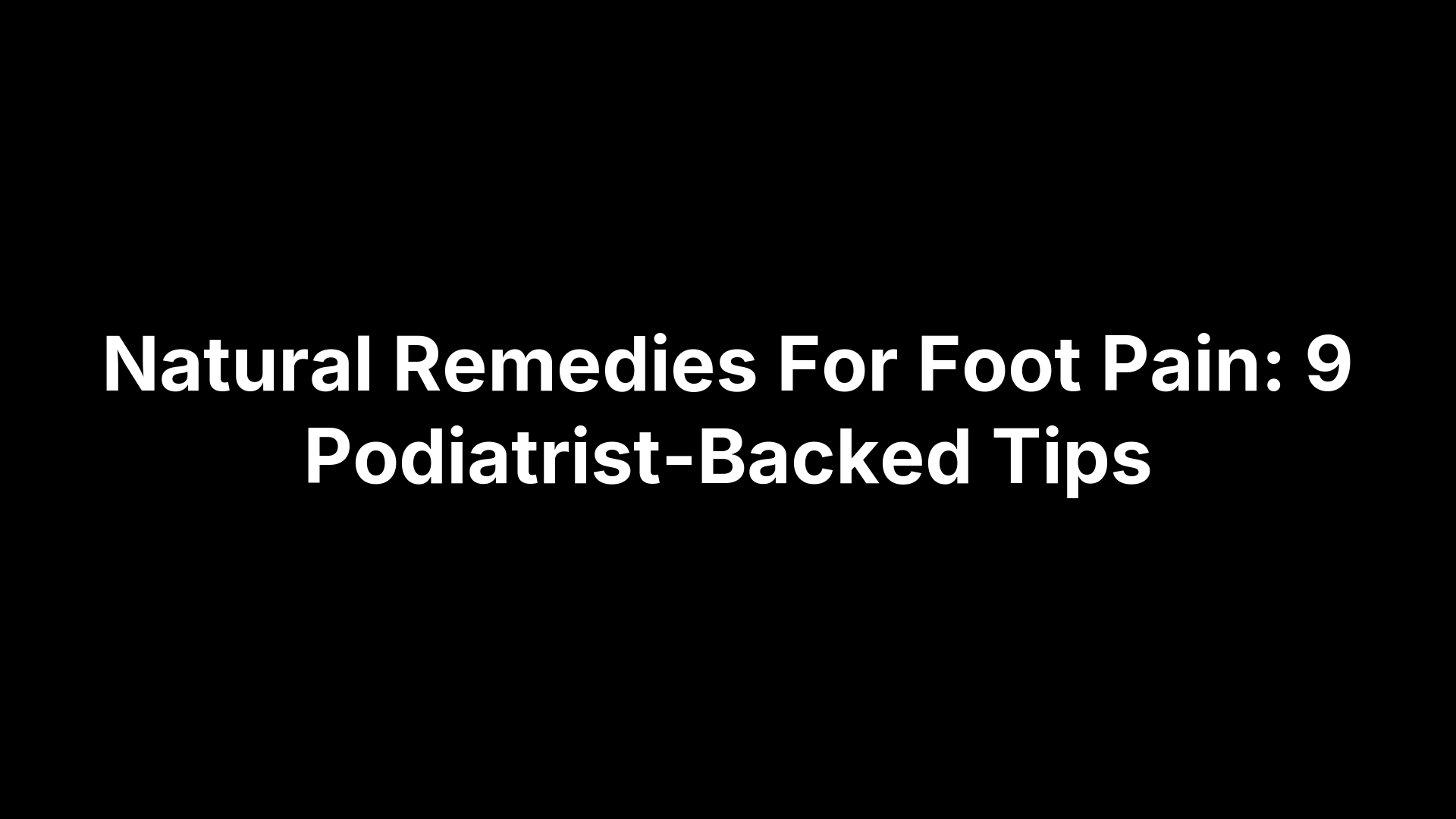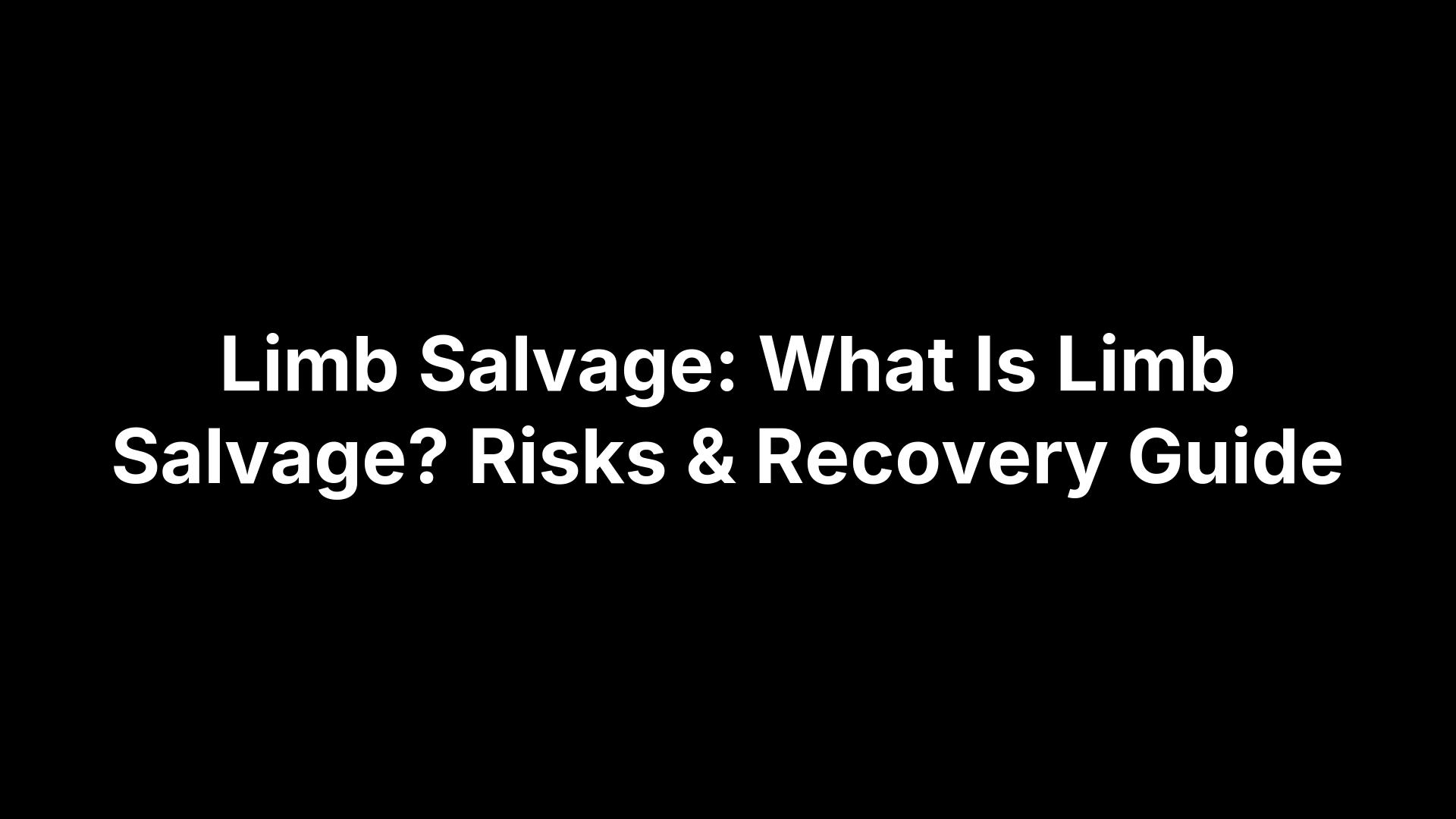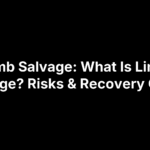Foot throbbing at the end of the day? The fastest, evidence-backed way to calm it down is simple: sit, prop your feet higher than your heart, and place an ice pack on the sore spot for 15–20 minutes. That quick trio—rest, ice, elevation—reduces swelling and numbs achy tissues better than any gimmick. Once the chill wears off, step into supportive shoes to keep pain from flaring right back up.
But relief shouldn’t stop at damage control. Foot pain is a signal, not a life sentence, and it rarely counts as “just getting older.” Overuse, plantar fasciitis, arthritis, irritated nerves, or shoes past their prime usually sit at the root. The good news: most cases improve with targeted stretches, smart footwear tweaks, and a podiatrist’s eye when pain lingers. In the guide below you’ll find 11 doctor-approved techniques—grouped by instant fixes, mobility work, and long-term prevention—so you can walk out the door pain-free and confident.
Understand the Roots of Foot Pain Before You Treat It
Before you decide which stretch or shoe insert to try, pause and ask why your foot hurts in the first place. Matching the remedy to the root cause is the fastest path to lasting relief—and it keeps you from turning a minor strain into a chronic problem.
The diagnoses podiatrists see most often include:
- Plantar fasciitis – stabbing heel pain, worst with the first steps of the morning
- Achilles tendinitis – tenderness or thickening just above the heel, flares after uphill running
- Metatarsalgia & stress fractures – burning or pinpoint pain in the ball of the foot, aggravated by high-impact activity
- Bunions, hammertoes, flat feet – structural quirks that change joint loading and shoe fit
- Arthritis (osteo- or rheumatoid) – deep ache, stiffness, and occasional swelling in multiple joints
- Nerve conditions (neuropathy, tarsal tunnel) – tingling, numbness, or electric shocks, often worse at night
Clues like where the pain sits, whether mornings or evenings are tougher, and how quickly symptoms ease after rest help narrow the field. Layer on the usual offenders—unsupportive shoes, sudden mileage jumps, concrete floors, extra body weight, or diabetes—and the picture gets clearer.
If you notice persistent swelling, open sores, color changes, or numbness that creeps upward, skip the home hacks on how to relieve foot pain and call a podiatrist the same day. Early attention prevents long-term damage.
Get the Right Diagnosis First (Tip #1)
Dr. Google can’t watch you walk or feel where a joint clicks. Until a professional tells you exactly what is irritated—bone, tendon, nerve, or fascia—every ice pack or stretch is a shot in the dark. A clear diagnosis guides the right mix of rest, rehab, and footwear changes, and it prevents a mild strain from snowballing into a chronic disability. In short, the smartest move in learning how to relieve foot pain is to start with a podiatrist visit.
Schedule a Podiatrist Visit—Start With Achilles Foot and Ankle Center
If you live in Central Virginia, Achilles Foot and Ankle Center makes that step easy: same-day appointments, on-site X-ray and ultrasound, and 13 convenient clinics mean less waiting and fewer trips across town. Their board-certified specialists evaluate everything from weekend warrior sprains to diabetic ulcers, so you leave with a plan, not guesswork.
What to Expect and Bring to Your Appointment
Bring the shoes you wear most, an activity log, and a current medication list. During the visit, expect a history review, gait analysis, and, if needed, imaging right in the office. Ask pointed questions—“Is this mechanical, inflammatory, or nerve-related?” “Do I need activity modifications or custom orthotics?” Most insurance plans, including Medicare and Medicaid, cover the consultation, and referrals typically aren’t required.
Instant Relief Techniques You Can Do Today (Tips #2–#4)
While a formal diagnosis is the gold standard, you don’t have to grit your teeth until the appointment. The following quick-hit strategies are what podiatrists recommend for dialing down swelling, stiffness, and throbbing the very same day the pain shows up.
Tip #2: R.I.C.E.—Rest, Ice, Compression, Elevation
Giving sore tissues a break is still the fastest way to tame inflammation.
- Rest: Stop the activity that triggered the pain and keep weight bearing light for 24–48 hours.
- Ice: Wrap a gel pack (or a bag of frozen peas) in a thin towel; apply 15–20 minutes every 2–3 hours. Never place ice directly on skin to avoid frostbite.
- Compression: A snug (not tight) elastic wrap or sleeve limits fluid buildup and provides gentle support.
- Elevation: Prop the foot 6–12 inches above heart level. Combine with diaphragmatic breathing to boost venous return.
Together, these steps reduce micro-tears, slow inflammatory chemicals, and dull nerve sensitivity—an ideal first strike in learning how to relieve foot pain quickly.
Tip #3: Soothing Foot Soaks and Contrast Baths
Warm water loosens tight soft tissue; magnesium-rich Epsom salts may further relax muscles. Dissolve ½ cup of salts in a basin, soak for 15 minutes, then pat dry. For stubborn swelling, try a contrast bath:
- 4 minutes in warm water (100 °F)
- 1 minute in cool water (60 °F)
Repeat the cycle four times. Skip if you have open wounds or diabetic neuropathy; sensation changes can hide burns or frostbite.
Tip #4: OTC Pain Relief and Topical Analgesics
Over-the-counter NSAIDs, such as ibuprofen (200–400 mg every 6 hours with food), can blunt soreness, but clear it with your doctor if you have kidney, stomach, or heart issues. Prefer to stay topical? Menthol or capsaicin creams distract pain receptors without systemic side effects—massage a pea-sized dab into the sore area up to four times daily. Remember, medication masks pain; pair it with rest and support for lasting results.
Stretches That Loosen Tight Muscles & Fascia (Tips #5–#7)
Tissues that don’t glide wind up screaming. When calves, arches, and tiny toe muscles stiffen, every step yanks on the plantar fascia or Achilles tendon like a too-short leash. Adding three simple mobility drills to your daily routine lengthens those tissues, improves circulation, and teaches joints to share the workload evenly. Translation: fewer flare-ups and one of the most cost-effective answers to “how to relieve foot pain” you’ll find.
Tip #5: Wall Calf Stretch
Tight gastrocnemius muscles transfer excess force straight to the heel pad and arch.
- Stand an arm’s length from a wall.
- Place one foot behind the other, back knee straight, heel flat.
- Lean forward until you feel a gentle pull in the upper calf—no bouncing.
- Hold 30 seconds; switch legs.
Do 3 sets per side, twice a day. If the stretch shifts to the arch, shorten your stance.
Tip #6: Seated Towel or Belt Stretch for Plantar Fascia
Grab a bath towel before you even leave bed:
- Sit with the aching leg extended.
- Loop the towel around the ball of your foot and toes.
- Gently pull toward your shin until you sense a stretch along the sole.
Hold 30 seconds, repeat 3 times. Performing this before the notorious “first step” reduces that stabbing morning pain by pre-loading the fascia.
Tip #7: Toe Taps, Curls, and Marble Pick-Ups
Strong intrinsic muscles act like built-in orthotics.
- Toe taps: While seated, tap the big toe while keeping other toes still, 3 × 15.
- Towel curls: Scrunch a hand towel underfoot, 3 × 15.
- Marble pick-ups: Place 10 marbles on the floor, grab each with your toes.
Progress by adding a resistance band around the toes or performing the drills standing to challenge balance.
Self-Massage & Myofascial Release Techniques (Tips #8–#9)
When tight fascia bunches up, it tugs on nerves and joints every time you stand. Working the knots out with a simple tool can be the missing piece in your plan on how to relieve foot pain—especially after long hours on hard floors or a tough workout. Spend just four minutes a day on the drills below and you’ll boost circulation, loosen scarred tissue, and teach the arch to relax.
Tip #8: Tennis Ball or Frozen Water Bottle Roll
- Sit tall, bare or socked foot on the floor.
- Place a tennis ball (soft) or frozen water bottle (firm + icing) under the arch.
- Roll from heel to toes using slow, steady pressure—no sharper than a 6 ⁄ 10 on your discomfort scale.
- Linger 10 seconds on tender spots, then keep moving.
Two minutes per foot, morning and evening, is plenty. The cold bottle doubles as cryotherapy, shrinking inflammation while the rolling motion separates sticky fascia fibers.
Tip #9: Foot Roller or Massage Stick
Prefer a purpose-built gadget? A ridged wooden or textured foam roller reaches between metatarsal heads for a deeper release than a smooth ball.
- Wood: firm, precise, easy to sanitize with alcohol wipes.
- Foam: slightly softer, great for sensitive feet; wash with mild soap and air-dry.
Start dry for maximal grip; add a dab of unscented lotion when you want more glide. Roll each arch 60 seconds, then sweep across the forefoot and heel. Use daily after stretches or anytime you feel tension building.
Upgrade Footwear & Support (Tips #10–#11)
You can stretch and ice all day, but if every step lands on a worn-out midsole, the pain cycle never ends. Swapping or upgrading your shoe gear is one of the most overlooked answers to how to relieve foot pain because it removes the stress at its source rather than treating the aftermath.
Tip #10: Choose Supportive Shoes and Replace Worn Pairs
Running shoes lose up to 40 % of their shock absorption after roughly 300–500 miles, and everyday sneakers flatten in 6–12 months. Retire them sooner if you see creases in the midsole or feel new hot spots. A good replacement checks these boxes:
- thumb-width room in the toe box
- firm heel counter that resists pinching
- minimal twist through the arch but a smooth bend at the ball of the foot
Need to dress up or lace work boots? Slip in a cushioned insert, opt for a wider size, or add a ¼-inch heel lift to unload the Achilles.
Tip #11: Custom Orthotics, Night Splints, and Compression Sleeves
Off-the-shelf inserts realign mild flat feet; prescription orthotics from a podiatrist correct bigger imbalances and last years. If plantar-fascia pain wakes you, a night splint that holds the ankle at 90° keeps the tissue elongated so mornings start smoother. For swelling or long shifts on concrete, graduated compression socks (15–20 mm Hg) boost venous return—measure your calf circumference to get the right fit and avoid rolls that cut off circulation. Combine these devices with proper shoes for all-day comfort.
Lifestyle & Prevention Habits to Keep Pain Away
The fastest fixes only go so far if your daily habits keep piling stress back onto your feet. A few strategic changes—most of them free—can slash your odds of another flare-up and make every step feel lighter.
Weight Management and Low-Impact Cross-Training
Every extra pound you carry adds roughly 4 lb of force to the foot with each stride. Shifting ten pounds means 40 lb less impact—thousands of times per day. Trade a pounding jog for swimming, cycling, or the elliptical two or three days a week to give joints a breather while still burning calories.
Daily Foot Care & Diabetic Precautions
Quick nightly check: inspect soles with a mirror, moisturize cracked heels, and trim nails straight across. If you have diabetes or neuropathy, this ritual is non-negotiable; unnoticed blisters can snowball into ulcers.
Strengthening the Foot and Ankle Chain
Build resilience three days a week:
- Short-foot holds (pull arch up without curling toes) 3 × 10
- Single-leg balance 3 × 30 s per side
- Resistance-band eversion/inversion 3 × 15
Pair these moves with the stretches above and you’ll have a bulletproof system for how to relieve foot pain—and keep it gone.
When to Seek Advanced Care or Surgery
Most sore feet bounce back with the steps above, but if pain shrugs off ice and rest, ongoing self-treatment can backfire. Knowing when to escalate protects you from permanent joint damage or nerve loss.
Red-Flag Symptoms That Need Same-Day Attention
See a podiatrist or the ER today if you notice sudden swelling, inability to bear weight, purple or pale toes, spreading redness, fever, or a deep cut that won’t stop bleeding.
Imaging, Injections, and Ultrasound-Guided Treatments
Persistent pain beyond four weeks warrants imaging. X-rays reveal bone spurs, ultrasound shows tendon tears, and MRI unmasks stress fractures. Guided injections—corticosteroid or platelet-rich plasma—can calm inflammation and jump-start healing.
Surgical Procedures for Chronic Conditions
When conservative care fails after six months, surgery is an option. Procedures include plantar fascia release, bunionectomy, tendon repair, or ankle arthroscopy, all designed to restore alignment and end pain.
Quick Answers to Common Foot Pain Questions (FAQ)
Need an answer before your next step? The rapid-fire explanations below hit the high points so you can make a smart decision without scrolling through an anatomy lecture.
What is the best way to relieve foot pain quickly?
The triple attack of ice, elevation, and supportive shoes calms swelling, unloads sore tissues, and keeps alignment correct—see Tips #2 and #10 for the complete how-to.
How can I relieve foot pain in 30 seconds?
Sit, loop a towel around your forefoot, pull for 15 seconds, then roll a tennis ball under the arch for another 15—instant stretch plus massage.
Why do my feet hurt even when I’m resting?
Inflamed tissue or irritated nerves keep firing after weight is off; plantar-fasciitis “post-static dyskinesia” and peripheral neuropathy are classic examples—persistent night pain merits a podiatry work-up.
Is heat or ice better for foot pain?
Ice tames fresh swelling and sharp aches; moist heat shines for morning stiffness or chronic tight calves. When in doubt, start cold, switch warm after 48 hours.
Should I walk through the pain or rest?
If discomfort stays below a 4/10 and eases within 24 hours, gentle walking is okay. Sharp, worsening, or limping pain demands rest and evaluation.
Ready to Get Back on Your Feet
Foot pain doesn’t need to rule your schedule. Start with a clear diagnosis, cool things off with R.I.C.E., then layer on mobility work, self-massage, and shoe upgrades. Add lifestyle tweaks—weight control, daily foot checks, and strength drills—and you’ve just hit each of the 11 doctor-backed tips on how to relieve foot pain. Most readers feel measurable relief within days, but remember: stubborn swelling, numbness, or pain that lingers past a week deserves professional eyes. The podiatrists at Achilles Foot and Ankle Center offer same-day visits, on-site imaging, and custom orthotics so you can swap guessing for a tailored treatment plan. Ready to walk, run, or simply stand without wincing? Schedule an appointment today through the Achilles Foot and Ankle Center homepage and get back to doing what moves you—comfortably.






